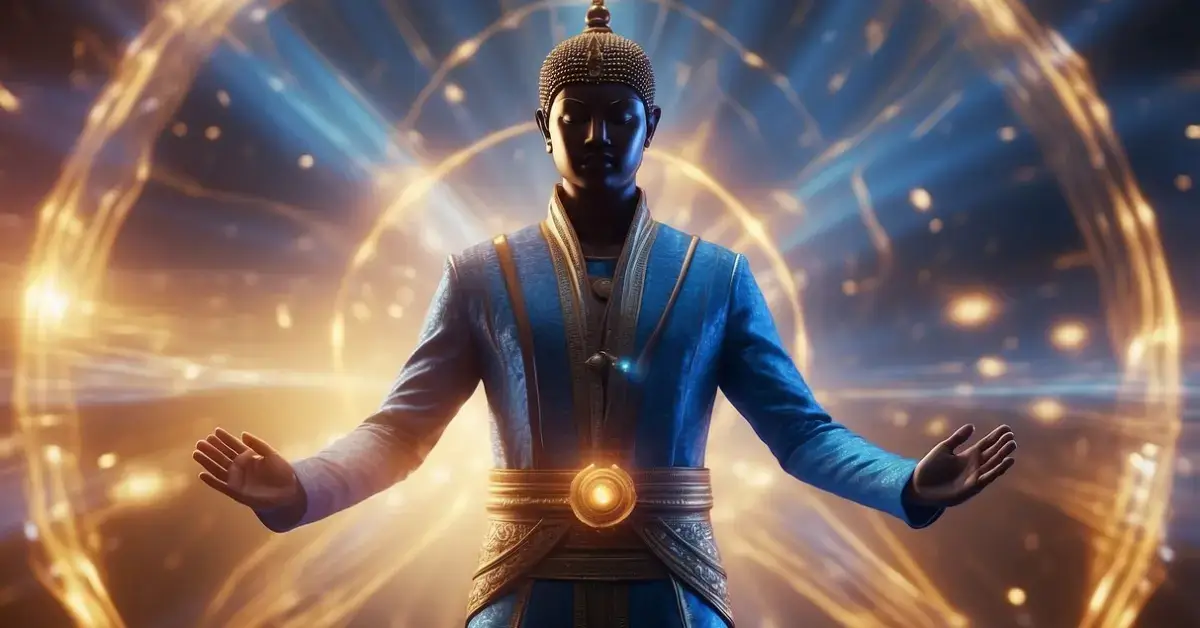Uncover the mysteries of “kundalini awakening symptoms” and their significance on your spiritual path. These signs might indicate the beginning of a transformative experience.
Understanding Kundalini Awakening
Kundalini awakening refers to the process of igniting a dormant energy within, believed to reside at the base of the spine. This awakening can lead to profound changes in consciousness and can be facilitated through certain spiritual practices.
Definition and Concepts
Kundalini refers to a coiled serpent-like spiritual energy that lies dormant at the base of the spine. The concept comes from ancient Indian traditions and aims to awaken this energy to achieve spiritual enlightenment and a heightened state of consciousness. When awakened, Kundalini energy travels up the central channel of the spine, activating various energy centers known as chakras.
The journey involves multiple symptoms, both physical and emotional. These may include body spasms, emotional upheavals, and a renewed sensation of oneness and purpose in life. The process aims to connect the individual soul to a higher state of awareness and spiritual oneness.
The Role of Chakras and Energy Flow
Chakras are vital to the understanding of Kundalini awakening. There are seven primary chakras, each located at different points along the spine, starting from the base up to the crown of the head. These chakras act as energy centers through which Kundalini must pass to facilitate full spiritual awakening.
When Kundalini energy flows freely through these chakras, it can remove energy blockages, allowing for a smoother spiritual and physical experience. Each chakra holds specific attributes, such as grounding, creativity, or emotional balance.
Balancing these chakras enhances overall energy flow, fostering a more harmonious life experience. Misalignment or blockages in these chakras can lead to discomfort and hinder the awakening process.
Kundalini Yoga: A Path to Awakening
Kundalini Yoga offers a structured way to awaken this dormant energy. This form of yoga combines postures, breathing exercises, and meditation techniques designed to stimulate the Kundalini energy. Practices may include specific poses that target the base of the spine, where the coiled Kundalini rests.
Breathing exercises, known as pranayama, and mantras are integral parts of the practice, aiding in the activation of the energy flow. Meditation plays a crucial role, providing a focused environment for the energy to rise through the chakras.
Many practitioners find that Kundalini Yoga not only aids in spiritual awakening but also brings clarity, emotional balance, and a profound sense of purpose. The practices are designed to be accessible to anyone willing to explore this ancient path to spiritual enlightenment.
Physical and Emotional Symptoms

When experiencing a Kundalini awakening, the body and mind undergo a range of transformations. These changes can manifest as physical sensations and emotional shifts, often leading to both profound insights and challenges.
Sensations and Energy in the Body
I noticed tingling and vibrations coursing through my body. These feelings often start in the lower spine and gradually move upward. Many people report feeling heat or cold sensations, indicating energy flow through the chakras.
Kriyas, spontaneous body movements, were another sign for me. These can be subtle, like a twitch, or more pronounced, like shaking. Additionally, heightened psychic abilities and sensitivity to light can occur as energy movement intensifies. Understanding these signs can significantly aid one’s spiritual growth.
Understanding Emotional Shifts
Emotional changes were as profound as the physical ones. I experienced waves of heightened emotions, ranging from deep sadness to intense joy. Anxiety and despair are common emotional symptoms of Kundalini awakening, bringing unresolved issues to the surface.
Increased sensitivity to the emotions of others also became more pronounced. This heightened awareness, though sometimes overwhelming, fostered a deeper connection to my internal and external spiritual worlds. Recognizing and accepting these emotional shifts is a crucial step in this transformative journey.
Physical Symptoms and Their Implications
Physically, the symptoms were varied and, at times, challenging. I often felt intense heat or cold sensations, especially in the spine and limbs. Digestive issues, such as discomfort or changes in appetite, were also frequent occurrences.
Sleep patterns became irregular, with vivid dreams acting as another awakening sign. Sensitivity to light and sound heightened, requiring adjustments in my environment. These symptoms, while sometimes daunting, are part of the transformative power of Kundalini energy, guiding individuals towards greater wisdom and spiritual growth.
Practical Guidance for the Awakening Process

Kundalini awakening is a profound journey that can transform every aspect of life. To navigate this experience, incorporating meditative and yogic practices, seeking compassion and support, and balancing challenges is essential.
Meditative and Yogic Practices
Engaging in specific meditative and yogic practices can be highly beneficial during a kundalini awakening. I found that incorporating kundalini yoga helped in harmonizing the rising energy.
Pranayama, or breathwork, plays a crucial role by regulating the life force within the body. I practice deep breathing exercises to center myself.
Chanting and mantras also resonate positively with my energy. Repeating sacred sounds can elevate my consciousness and ease discomfort.
It’s crucial to maintain a consistent yoga and meditation routine to facilitate a smoother and more harmonious spiritual experience.
Finding Compassion and Support
On this journey, the importance of finding compassion and support cannot be overstated. Surrounding myself with empathetic and understanding individuals has been a cornerstone of my process.
Seeking out a spiritual teacher or a support group offers valuable guidance. I’ve met many people who share their spiritual experiences, providing me with insights and comfort.
Practicing self-love and nurturing relationships that foster unconditional love and compassion can significantly aid in facing challenges. Reflecting on my past traumas and receiving support has helped me grow emotionally and spiritually.
Navigating Challenges and Seeking Balance
The path of kundalini awakening comes with its own set of challenges. From physical spasms to emotional upheavals, finding balance is imperative.
Creating a peaceful environment and engaging in activities that ground me, like connecting with nature, has been beneficial. Balancing my chakras through tailored meditative practices helps maintain harmony.
When faced with intense emotions or physical sensations, I prioritize maintaining a calm demeanor and remind myself it’s part of the journey. It’s essential to be patient and gentle with myself during this transformational process, acknowledging that it’s okay to ask for help or take breaks when needed.
Navigating these challenges with a balanced approach ensures that I embrace the journey toward spiritual enlightenment holistically.
FAQ – Kundalini Awakening Symptoms
How do you trigger kundalini awakening?
You can trigger Kundalini awakening through practices like meditation, yoga, breathwork, and chanting. Deep spiritual practice and guidance from an experienced teacher can also help awaken this energy.
What does kundalini rising feel like?
Kundalini rising feels like a surge of energy up the spine, accompanied by heat, tingling, or waves of bliss. You may also experience heightened awareness, vivid dreams, and deep emotional or spiritual insights.
How painful is kundalini awakening?
Kundalini awakening can be mildly uncomfortable to intensely painful, depending on the individual. Physical symptoms may include headaches, body aches, and emotional turmoil, while others may experience profound peace and joy. The experience varies greatly.
If you liked this blog post about the topic: Kundalini Awakening Symptoms, don’t forget to leave me a comment down below to tell me about your experience with it. Or have a look at my other articles:
- Why Is Kundalini Yoga Dangerous? Understanding the Risks
- Kundalini Energy: Unlocking Your Inner Potential
- How To Connect With Your Higher Self: Simple Steps
- White Aura: Discovering Its Meaning And Benefits
- How Many Spiritual Gifts Are There: A Friendly Guide
- How to Be More Spiritual: Simple Daily Practices
Feel free to also check out our other Articles from the category “Spirituality“ and don’t forget to follow us on Pinterest.






